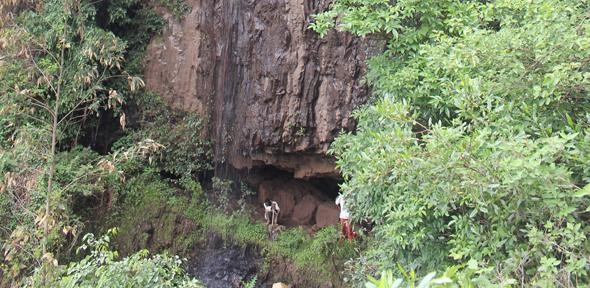Scientists have extracted DNA from a human skull that was buried in a cave in Ethiopia, north Africa which provides new insight about the ancestry of modern Africans including the migration of people from the Middle East towards the Horn of Africa.
This ancient man called "Mota" is the apparently the first African man whose genome has been fully sequenced, revealing his complete genetic blueprint. This also marks the first time that gene sequencing was conducted on African remains since scientists have always chosen ancient human remains that are recovered in cooler climates for better DNA preservation.
The cave is located in the southwest region of Ethiopia, in the Gamo highlands at 6,440 feet above sea level, which is uncovered in 2011, according to geneticist Andrea Manica from the University of Cambridge.
According to anthropologist Matthew Curtis from the University of California, Los Angeles and Ventura College, the skeletal remains belonged to an adult male who was bound during his burial, as he was also buried with stone tools inside the grave revealing that Mota also lived during hunter-gatherer times.
The DNA was extracted from the skull, specifically from the petrous bone which is a dense region that is ideal for preserving ancient DNA specimens, according to geneticist Eppie Jones from the Trinity College Dublin. Jones adds that the ancient man had dark skin, brown eyes and adapted to living in higher altitudes.
Manica also adds that Mota is also genetically similar to the current locals of these highlands in Ethiopia and eastern Africa.
Mota also did not possess Eurasian ancestry which made it easier for researchers to study his genome especially the Eurasian genetic component in modern day Africans. The genome revealed that there was apparently a large migration composed of western Eurasians into Africa that happened some 3,500 to 4,000 years ago, according to Marcos Gallego Llorente from the University of Cambridge.
This massive migration spans originally from the ancient Near East and Fertile Crescent which is now modern day Iraq, Turkey, Iran and Syria that significantly changed the genetic composition of Africa.
This ancient genome was then compared to the DNA of modern day Africans where East Africans apparently possess 45 percent of European ancestry due to this ancient migration and the rest of the populations of Africa also have at least six percent of their genome, originally from this Eurasian migration.
These Eurasians that migrated to Africa also come from a lineage that introduced agriculture to Europe some 8,000 years back says, Llorente. However, agriculture was already a practice in Africa when these Eurasians arrived, but they introduced new crops and animals to the continent.
This new study is published in the journal, Science.



























